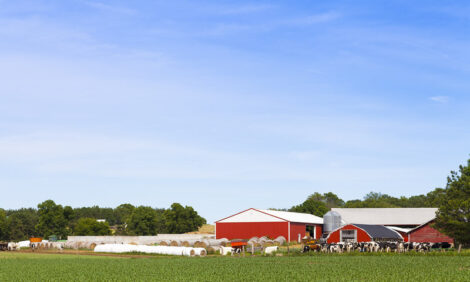



Outlook Report Places Onus on Management for New South Wales
Production and management systems must be developed in order to cope with greater volatility, so as to maximise from Asian milk demand over the coming decade, says New South Wales Dairy Australia.This is stated in the 2013 Dairy Industry Overview which also discusses resource usage as an area paramount to the future success of a A$522 a year industry.
Dairy Australia added that the New South Wales (NSW) dairy industry has undergone a recent period of consolidation of processing organisations and capacity, resulting in fewer processors and a change from cooperative structures to predominantly company structures. Milk pricing has changed as a result of competition between the major supermarket chains and a reduction in the ability to deal with milk supply over and above the liquid milk market.
NSW dairy farmers will need to manage their businesses to account for a range of external risks in order to remain viable into the future. Dairy production systems in NSW will need to be adaptable and resilient in the face of the likely volatility affecting milk price, labour supply, climate and input costs.
Farm incomes are under pressure from milk pricing competition and increasing input costs, and productivity growth appears to have slowed in recent times.
The NSW dairy industry faces continuing challenges in relation to natural resource management, including the need to:
- Substantially improve water use efficiency and water quality on and off farm in response to water availability and pricing
- Prioritise natural resource management in the context of catchment-wide resilience and targets. The location of dairy farms in catchment landscapes subject to variable climate, together with the impact of climate change, means that changes will be needed to on-farm practices to contribute to catchment health and resilience Formulate on-farm responses to national and international agendas around the issues of energy use, greenhouse gas emissions and climate change
- Produce creative responses from the dairy industry to resolve land and water use conflicts in relation to issues such as coal seam gas extraction and urban encroachment
Critical Issues and Dynamics Over the Next 10 years
• The growing middle class in China, India and Asia in general will create increasing demand for dairy products from Australia. Continued interest from investors in these markets highlights the opportunities that exist for the NSW dairy industry to service these growing and geographically close markets.
• Knowledge as a key input for future growth and survival of the dairy industry will require appropriate educational facilities and well-educated and informed advisers to train the service providers of the future.
• As markets for milk become increasingly volatile, NSW dairy businesses will need to continue to evolve and develop production and management systems and appropriate business models to adjust to these markets and maintain competitive.
Territory Figures and Summary
- The dairy industry in NSW is worth about $522 million in terms of gross value of production (GVP)1 NSW is recognised as the dairy state with the most regional differences of any Australian state, and these regional differences are highlighted in the variety of feedbase systems.
- These regional differences also protect the quality and quantity of milk supply during extreme weather events, such as when an extreme flood event curtails production in one area only to be offset by production from another region.
- Consequently, the regional differences across NSW are a distinct advantage in most periods of adverse climatic conditions. in a total state GVP for agriculture of $8,359 million.
- Unlike the Victorian industry, the NSW industry is based largely on the production of milk for drinking: almost 70% of the milk produced in NSW is used for drinking.
- Although the number of farms in NSW has declined markedly in the period since 1999–2000 (from 1725 to 757), production per cow and average number of cows milked have both increased (from 4927 to 5164 L/cow and from 155 to 240 cows, respectively).
An Australia-wide decline in support at both the National and State Government level for agricultural research, development, education and extension has shifted the responsibility for the role to industry. The sustainability and independence of this model for industry and the public good has yet to be tested.


